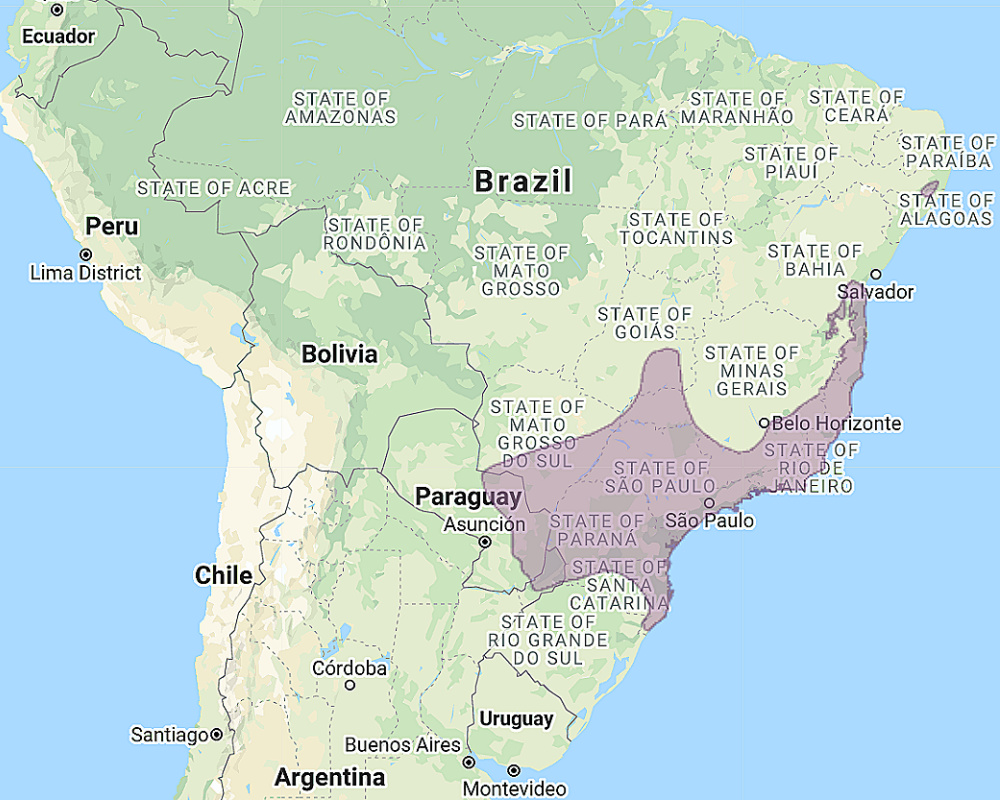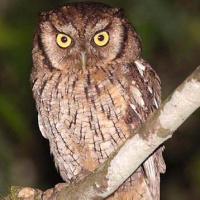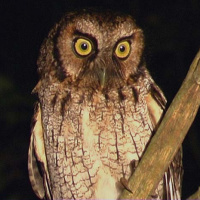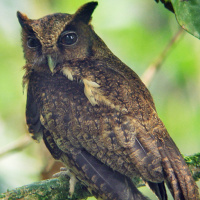Introduction
The Black-capped Screech Owl is a small owl with prominent ear-tufts. It is also known as the Variable Screech Owl.
Photo Gallery (3 pictures)
Sound Gallery
Information
Description: The Black-capped Screech Owl is highly variable in colouration and plumage patterns, and there are three colour
morphs generally - dark, red and grey, with dark being the most common.
Dark Morph: The facial disc is dirty brown, finely vermiculated dark, with a prominent rim. The sides of the face are dark brown or blackish.
Eyes are normally dark brown or chestnut, and occasionally bright or amber-yellow. The bill and cere are greenish-yellow.
The eyebrows extend from the base of the bill to the prominent ear-tufts. They are paler than the facial disc, with vermiculations of brown and pale colour.
The crown is nearly uniform dark brown to blackish, with the hindneck having a narrow whitish or pale yellowish-ochre margin.
Upperparts are dark earth-brown, mottled and vermiculated with pale brown or buff. The outer webs of the scapulars are pale yellowish-ochre or
yellowish-white with dark edges, forming a pale line across each shoulder.
The primary and secondary flight feathers are barred dark and light. The tail feathers are mottled light and dark with indistinct barring.
Underparts are paler than the upperparts, with more warm brown. The ground-colour on the lower breast and belly is dirty whitish. Feathers have dark
shaft-streaks, often widening spade-like at the tip, and especially at both sides of the upper breast where 2-3 dark, often slightly curved, branches
extend from the central shaft-streaks to the edges. Additionally, the entire underside is finely vermiculated dark.
Tarsi are feathered to the base of the toes, which are brownish-grey to pale flesh-brown. Claws are dark horn with blackish tips.
Red morph: General colouration is rufous, with darker upperparts and a dark cap.
Grey morph: Greyish plumage lacking any brown or rufous. Dark patterns are very prominent.
Size: Length 22-23cm. Wing length 170-184mm. Tail length 98-110mm. Weight 115-160g. Females are heavier than males.
Habits: The Black-capped Screech Owl is a nocturnal bird, roosting by day in the dense foliage of trees or in cavities. This species has a tendency to settle in loose contact with other pairs, and quite often, several males may be heard singing from the same place.
Voice: The A-song is a long, purring trill usually lasting about 8-14 seconds, but can be up to 20 seconds long. It begins very faintly and increases gradually in volume then breaks off abruptly. The B-song is a shorter sequence of staccato notes about 3 seconds duration in a 'bouncing-ball' rhythm. Female calls are usually slightly higher pitched than males.
Hunting & Food: These owls feed mainly on insects, especially locusts, cicadas, moths and beetles, and sometimes spiders. Probably takes small vertebrates occasionally. They usually hunt from a perch, frequently in low undergrowth, taking prey from branches, leaves or tree trunks, or from the ground.
Breeding: Little known, but likely similar to other Screech Owls. Nests are in tree holes, either natural or abandoned woodpecker nest-holes. The male sings near the potential nesting site, 'showing it off' to the female. A clutch of 2-3 white eggs is laid directly on the the bottom of the nest hole. The female alone incubates the eggs, while the male provides her with food, announcing his approach with short verses of song or soft contact calls.
Habitat: Inhabits primary and secondary rainforests with dense undergrowth. Sometimes approaches the vicinity of roads, forest edges and human settlements. Can be found up to 600m above sea level in warm climates, but up to about 250m in cooler climates.
Distribution: Southeast Brazil, and from eastern Paraguay to northern Argentina.

Range of the Black-capped Screech Owl Megascops atricapilla
Status: Locally common, but threatened by forest destruction.
Original Description: Temminck, Coenraed Jacob & Laugier de Chartrouse, (Baron) Meiffren. 1822. Nouveau recueil de planches coloriées d'oiseau pour servir de suite et de complément aux planches enluminées de Buffon, livraison 25, pl. 145.





